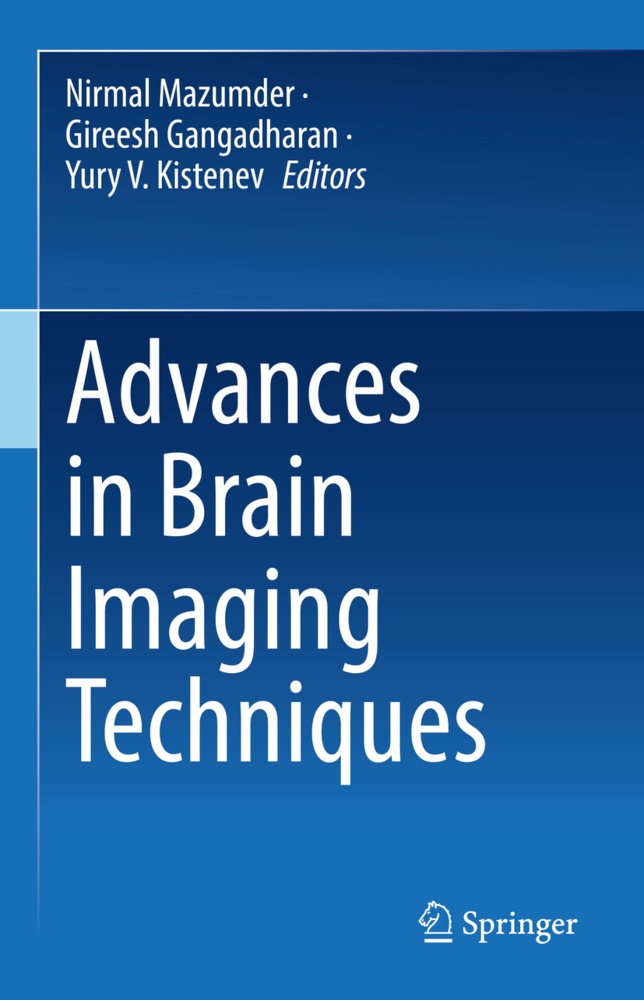Share
Fr. 236.00
Gireesh Gangadharan, Yury Kistenev, Yury V. Kistenev, Nirmal Mazumder, Yury V Kistenev
Advances in Brain Imaging Techniques
English · Hardback
Shipping usually within 2 to 3 weeks (title will be printed to order)
Description
The book reviews the recent developments in brain imaging and their technological advancements to understand molecular mechanisms associated with neurological disorders and basic behaviors in humans and rodents at the structural, molecular, and functional levels. It discusses the usefulness of advanced optical microscopy techniques, including optical coherence tomography (OCT), miniscope, multiphoton fluorescence (2PF & 3PF), adaptive optics, harmonic generation, and Raman microscopy for understanding pathomechanism of brain disorders and pathological and physiological changes associated with neurodegenerative diseases. Also, the book presents conventional imaging modalities, including Magnetic Resonance Imaging (MRI), for delineating underlying mechanisms and precise early diagnosis of neurological disorders. This book is a useful resource for neuroscientists and researchers working in biomedical engineering and optics.
List of contents
Optical coherence tomography in brain gliomas detection and peritumoral white matter state evaluation.- Two Photon Fluorescence Lifetime Imaging of Reduced nicotinamide adenine dinucleotide in Brain Research.- Types of Raman Scattering Techniques for Neurodegenerative Diseases.- Drosophila brain advanced multiphoton imaging.- Myelin imaging.- Brainbow: Principle, Technique and Applications.- Photoacoustic Imaging of Brain.- Photodynamic therapy of brain diseases.- Advanced Magnetic Resonance Imaging (MRI) of Brain.- Indirect imaging.- Multimodal Noninvasive Imaging Strategies for Clinically Monitoring Degenerative Disorders of the Brain.- Machine learning approach in brain imaging.- Transgenic Brain mapping Techniques in Drosophila melanogaster.- Behavioural phenotyping to study cognitive and non-cognitive symptoms in the rodent model of Alzheimer's disease.
About the author
Report
"The texts are well referenced and supported by clearly labelled diagrams, flow charts and figures, to aid with reading. ... it may be seen as a useful addition to a departmental library for those neuroradiology and neurosciences colleagues with a particular interest in this developing field." (Yuan Chun Kheng, RAD Magazine, December, 2023)
Product details
| Assisted by | Gireesh Gangadharan (Editor), Yury Kistenev (Editor), Yury V. Kistenev (Editor), Nirmal Mazumder (Editor), Yury V Kistenev (Editor) |
| Publisher | Springer, Berlin |
| Languages | English |
| Product format | Hardback |
| Released | 11.08.2022 |
| EAN | 9789811913518 |
| ISBN | 978-981-1913-51-8 |
| No. of pages | 257 |
| Dimensions | 155 mm x 18 mm x 235 mm |
| Illustrations | XII, 257 p. 1 illus. |
| Subject |
Natural sciences, medicine, IT, technology
> Medicine
> Non-clinical medicine
|
Customer reviews
No reviews have been written for this item yet. Write the first review and be helpful to other users when they decide on a purchase.
Write a review
Thumbs up or thumbs down? Write your own review.

